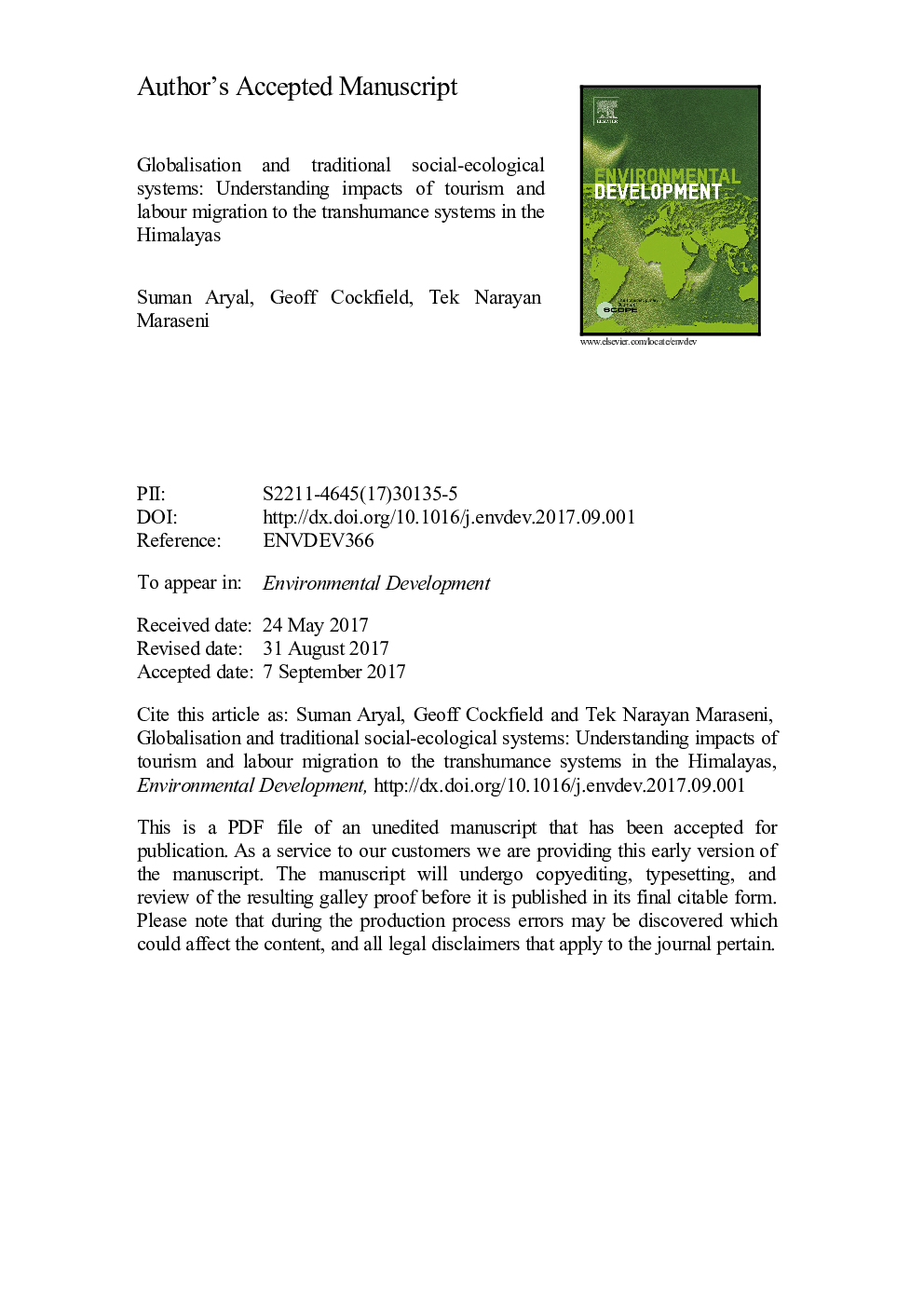| Article ID | Journal | Published Year | Pages | File Type |
|---|---|---|---|---|
| 8848291 | Environmental Development | 2018 | 35 Pages |
Abstract
Globalisation has increased the flow of people, ideas, knowledge, technology and money by varying degrees. Due to constraints such as inaccessibility and fragility, the Himalayan region remained isolated from the outside world until relatively recently. Globalisation has however, now breached such isolation with increased tourism in some areas and increased migration from others. The accelerated rate of tourism and out-migration has the potential to affect different components of traditional socio-ecological system (SES). In the high Himalayan region, the transhumance is a system based on seasonal and recurring movement of livestock. This paper aims to explore the contemporary transhumance systems and impacts of tourism and labour migrations to the SES. The study was conducted in three sites in the northern mountainous areas of Nepal, having either significant tourism activities or labour migration. Primary data were collected by means of livestock census, household survey and focus group discussions. The results show that there were variations in proportions of households involved in transhumance, herd size, herd composition and seasonal mobility across the study sites but transhumance remains a major source of income and an important livelihood strategy for local people in all sites. Tourism and labour migration have reduced the number of households involved in transhumance systems and herd size by changing labour and income dynamics of the households but there are differential outcomes across the study sites. The findings of this study can contribute to strategies and policies for adaptation of SESs experiencing change pressures from non-traditional factors.
Related Topics
Life Sciences
Environmental Science
Ecology
Authors
Suman Aryal, Geoff Cockfield, Tek Narayan Maraseni,
